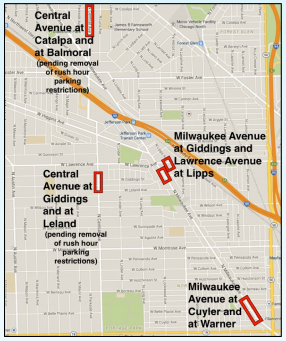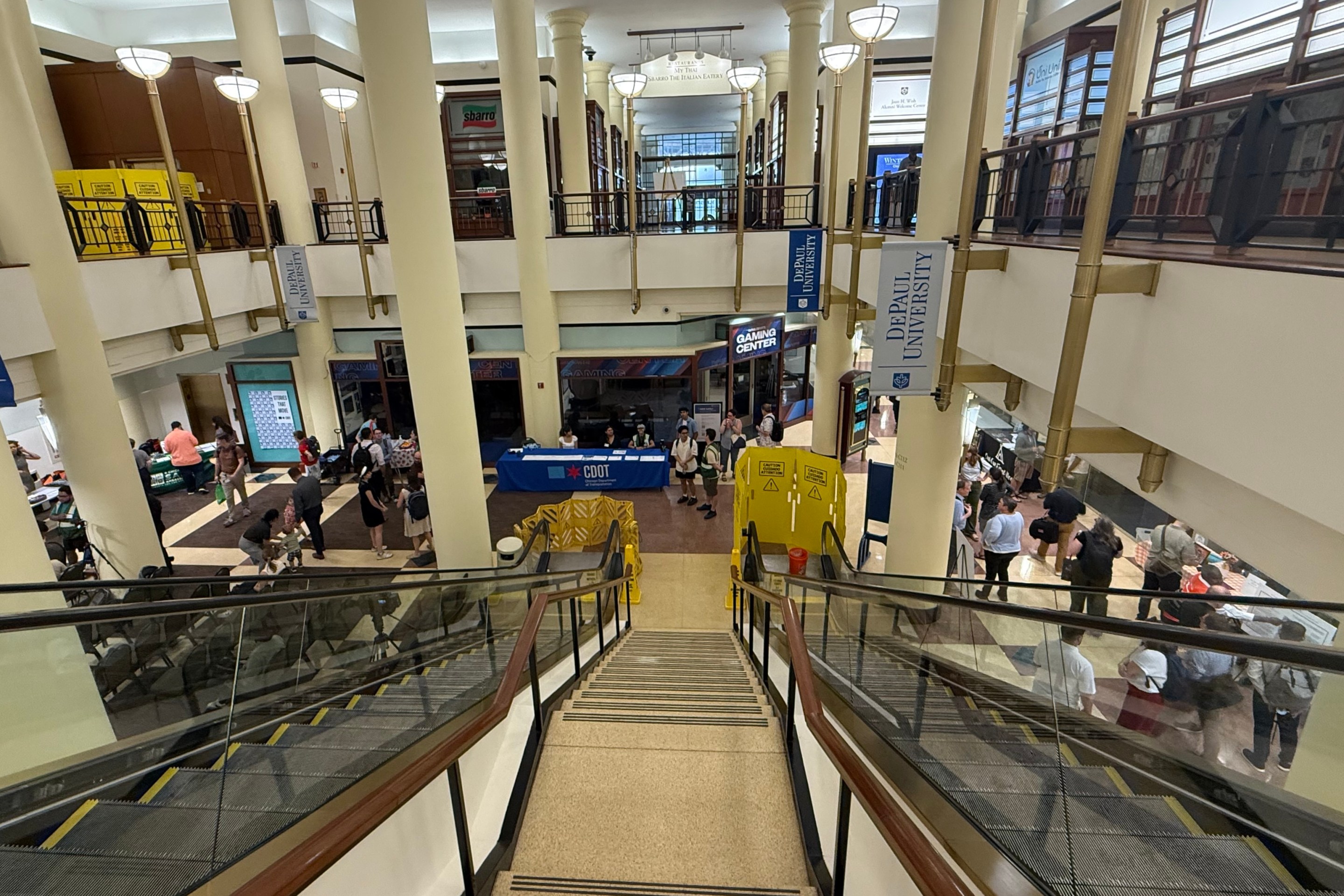
There were a number of gains for walking and biking in last week’s participatory budgeting election in the 45th Ward, a Far Northwest Side district represented by Alderman John Arena. Meanwhile, the city is moving forward with a safety overhaul of a stretch of Milwaukee Avenue within the ward. This project was watered down due to pressure from residents, but it will still be an improvement to the high-crash corridor.
The participatory budgeting process was first pioneered in the U.S. six years ago by 49th Ward Alderman Joe Moore, whose district includes Rogers Park. In the Chicago-style PB process, residents propose infrastructure projects to be funded by $1 million of the ward's annual discretionary funds, known as menu money, and then vote on the projects. In addition to elections last week in Moore and Arena's districts, a PB vote also took place in Alderman Ricardo Muñoz’s 22nd Ward, on the Southwest Side.
The 49th Ward had its biggest PB turnout ever last week, with over 1,800 voters. They chose to spend 62 percent of the PB budget on meat-and-potatoes infrastructure such as street and alley repaving, and curb repair. They also voted to fund a few sustainable transportation initiatives, including an improved pedestrian crossing at Clark and Chase, six new bus stop benches, and five murals to brighten up dismal CTA and Metra viaducts.
The results of last week’s 22nd Ward PB vote haven't been released yet, but over 700 people took part, up from the low 600s last year, according to Muñoz’s assistant Amanda Cortes. Walking-related projects on the ballot included speed humps, viaduct lighting, and yellow-diamond pedestrian crossing signs.
While roughly 650 people voted in the 45th Ward’s first PB election in 2013, and around 500 participated last year, only about 450 residents took part this year. They voted to spend 54.7 percent of the $1 million set aside for PB on street repaving.
Of the resident-proposed projects that will be funded, the top vote getter was one that had been on the ballot the previous two years: striping conventional bike lanes on Milwaukee from Addison to Lawrence, at a cost of $60,000. Coming in second was a project to improve pedestrian safety along Pulaski and Avondale by the Kennedy Expressway with better lighting, plus new crosswalks, guardrails, pedestrian crossing signs, and security cameras, at a price tag of $45,000.
Voters also chose to spend $30,000 on three “People Spot” mini parks near Irving Park/Cicero/Milwaukee, Lawrence/Milwaukee, and Lawrence/Austin. Specific locations and designs have not been chosen yet, but Arena said several businesses are interested in having the on-street seating areas installed nearby.
Residents chose to fund curb bump-outs to shorten pedestrian crossings at four locations in the ward, at a cost of $88,000. A pedestrian island will also be installed on Cicero at Pensacola, near a Metra station, with a price tag of $60,000. “We’ve counted 60-plus people a day crossing there morning and night,” Arena said. “We see an awful lot of ‘Frogger’ there.”
A second pedestrian island proposed for the intersection of Lawrence and Lavergne did not make the cut, but may be back on the ballot next year. Other funded projects include a turf field at Disney II Elementary, and a new playground at Farnsworth elementary.
Arena also provided an update on the project to calm traffic and improve conditions for walking and biking on Milwaukee from Lawrence to Elston, in Jefferson Park and Gladstone Park. This stretch is generally four travel lanes plus center turn lanes, but it averages well under 20,000 vehicles per day, and the excess capacity encourages speeding. As a result, the project area saw 910 crashes between 2008 and 2012, causing at least 17 serious injuries and three deaths.
The Chicago Department of Transportation proposed three possible street reconfigurations to address the speeding issue and protect vulnerable road users. The most effective solution would have been to convert two of the travel lanes to protected bike lanes, an idea that Arena seemed to support. Another possibility was converting the travel lanes to buffered bike lanes, which would have eliminated the need for any parking spot conversions.
During the community input process last year, there was fierce opposition to any travel lane conversions, spearheaded by police officer John Garrido, who subsequently ran against Arena and lost in this year's aldermanic election. A majority of residents who filled out a ward survey on the project opposed lane conversions, so Arena opted for a third alternative: upgrading the existing bike lanes to buffered lanes, with no reduction in the number of travel lanes.
While this alternative is the least robust of the three scenarios, it will involve a road diet of sorts. Milwaukee’s center turn lane will be reduced from 14 feet wide to 10 feet, and the travel lanes will be narrowed slightly. “My biggest concern is that if we’re going to do the project without lane [conversions], we need to to have some visual cues that tell people to slow down,” Arena said.
As such, the project will involve curb bump-outs with plantings, as well as pedestrian refuge islands with trees. The $1.5 million project also includes zebra-striped crosswalks and traffic signal timing adjustments. Arena is in talks with CDOT about adding speed feedback signs to alert drivers of their speed, although these are generally only installed in speed camera zones. “What we have now is an almost completely unmarked roadway, so all of these improvements will go a long way towards getting people to take their foot of the gas pedal,” Arena said.






